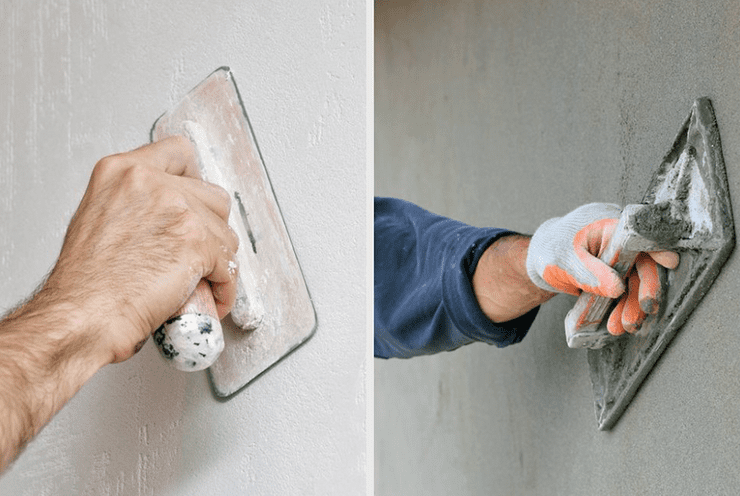Gypsum Plaster: A Versatile Construction Material
Gypsum plaster is a type of plastering material made from gypsum rock that is found naturally and is dried down to make plaster powder. It is created by adding water to the powder, which causes the gypsum to chemically combine with water and harden. This process forms a smooth, level surface that is suitable for painting and is often used for indoor plastering surfaces, partitions, and ceilings.

Mostly in construction gypsum plaster is compared with cement plaster in different aspects. In this article, we will compare gypsum plaster with cement plaster, highlighting their differences and the advantages of using gypsum plaster in construction projects.

Differences between gypsum plaster and cement plaster
The main differences between gypsum plaster and cement plaster are:
Gypsum plaster and cement plaster are two common materials used in construction, each with its unique characteristics. Here are the key differences:
Appearance and Finish: Gypsum plaster is white and produces a smooth finish, whereas cement plaster is grey and has a rough texture.
Weight and Surface Suitability: Gypsum plaster is lightweight and can be applied to smooth surfaces, whereas cement plaster is heavier and better suited for rough surfaces.
Curing Time: Gypsum plaster does not require curing with water, whereas cement plaster needs to be cured for at least 7 days.
Drying Time: Gypsum plaster dries significantly faster, taking around 20-30 minutes, compared to cement plaster which can take several hours to several days.
Mold and Mildew Resistance: Gypsum plaster is resistant to mold and mildew, whereas cement plaster is prone to attacks by mold.
Environmental Impact: Gypsum plaster is a green product that can be recycled, whereas cement plaster is not considered environmentally friendly.
Cost and Application Ease: Gypsum plaster is cheaper and easier to apply compared to cement plaster.
Usage: Cement plaster can be used for both interior and exterior plastering, whereas gypsum plaster is only suitable for interior walls and ceilings.
Some other gypsum plaster advantages include:
Gypsum plaster has good sound absorption properties, making rooms less prone to echoes and noise transmission compared to cement plaster. This can contribute to a more comfortable and peaceful indoor environment.
Gypsum plaster does not contain any hazardous substances and is completely natural, unlike traditional cement which is made from harmful chemical compounds. This makes it safer for use around children and pets.
In summary, gypsum plaster is a superior choice for interior plastering due to its smooth finish, fast drying time, and lower cost, while cement plaster is more durable and suitable for exterior applications.
Environmental benefits
Here are several environmental benefits to using gypsum plaster over cement plaster:
Lower Environmental Impact: Gypsum plaster does not require harsh chemicals, which reduces its environmental impact compared to cement plaster.
Water Conservation: Gypsum plaster requires less water during the application process compared to cement plaster, which helps conserve water resources.
Biodegradable: Gypsum plaster is biodegradable, making it a more eco-friendly option compared to cement plaster, which is made from non-biodegradable materials.
Reduced Waste Generation: Gypsum plaster generates less waste during application compared to cement plaster, which requires a significant amount of sand and generates more waste.
Lower Carbon Footprint: Gypsum plaster has a lower carbon footprint due to its lower energy requirements during production and application compared to cement plaster.
These benefits make gypsum plaster a more environmentally friendly choice for construction projects.
Conclusion
Gypsum plaster is a superior choice for interior plastering due to its smooth finish, fast drying time, and lower cost. Its environmental benefits, including lower environmental impact, water conservation, biodegradability, reduced waste generation, and lower carbon footprint, make it a more sustainable option compared to cement plaster. Additionally, gypsum plaster is easier to apply and can be recycled, making it a popular choice for construction projects.

